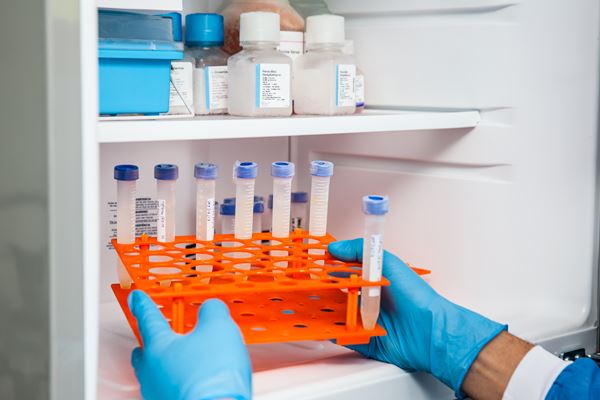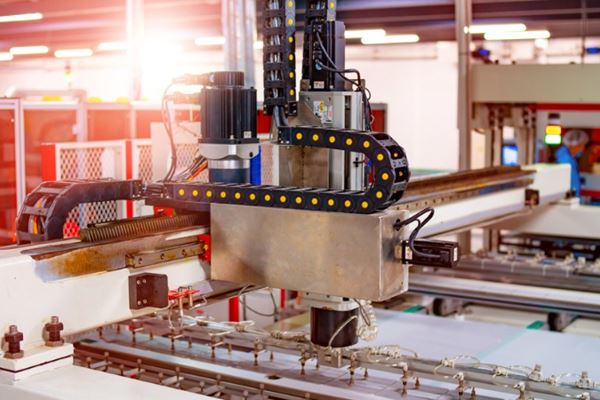Strategies for Managing Damage to Medical Equipment in Healthcare Facilities

In healthcare facilities, managing damage to medical equipment is essential for maintaining operational efficiency and ensuring patient safety. This blog post addresses the various types of damage that can affect medical equipment, the processes involved in assessing and repairing such damage, and the implications for healthcare businesses.
By examining real-world case studies and providing actionable strategies, this post aims to equip healthcare professionals with the knowledge needed to navigate the complexities of equipment damage and restoration.
Types of Medical Equipment Damage
Medical equipment can be damaged by various environmental factors, including smoke, moisture, or other contaminants. These contaminants can cause chemical reactions leading to corrosion, short circuits, and other irreversible issues. For instance, smoke deposits on circuit boards may turn into weak acids when exposed to moisture, resulting in short circuits or ground faults. Additionally, dust can act as an insulator, preventing proper heat dissipation and causing overheating and potential equipment failure.
Inspection and Documentation
Effective equipment management and maintenance begin with thorough visual inspections and meticulous data collection. This process involves capturing essential details such as model, serial number, and manufacturer data, and conducting a detailed examination to identify signs of wear and tear. Photographic documentation provides a visual record that can be shared with adjusters for further analysis, ensuring any anomalies or potential issues are flagged early.
Restoration Practices
Restoration of damaged equipment focuses on returning machinery and electronics to their pre-loss condition. This involves removing contaminants like smoke, water, drywall dust, or chemicals that could lead to future corrosion or rust, thereby preventing equipment failure. The goal is to ensure the equipment functions as it did before the damage occurred, maintaining operational integrity and minimising downtime.
Strategic Benefits for Healthcare Facilities
By understanding these strategies, healthcare facilities can improve their equipment management and restoration processes, ensuring they are well-prepared to handle damage and maintain efficient operations.
Managing Medical Equipment Damage
Significance and Vulnerability
Medical equipment, such as diagnostic tools like CT scanners and MRIs, and laboratory equipment like mass spectrometers, is crucial for healthcare facilities. These devices are highly specialised and expensive, making maintenance and repair a major concern. Damage can result from fire, smoke, water, and physical impact, each presenting unique challenges that require specific approaches to assess the extent of damage, feasibility of repair, and potential need for replacement. Understanding these factors is essential for making informed decisions that ensure the continuity of healthcare services.
Inspection and Loss Consulting
The inspection process is a key component of equipment loss consulting. On-site inspections involve a thorough examination of damaged equipment to collect data and assess the damage. This includes identifying the cause, evaluating the impact, and determining repair or replacement costs. Inspectors use both qualitative and quantitative methods for a comprehensive analysis. For example, smoke or soot damage can be assessed through visual inspection and scientific measurements to quantify contamination levels. This detailed approach ensures all aspects of the damage are considered, enabling accurate recommendations for restoration or replacement.
Restoration Options and Considerations
Restoration options for medical equipment vary depending on the type and extent of damage. Equipment can sometimes be cleaned and decontaminated to restore functionality, especially when replacement lead times are long, such as during the COVID-19 pandemic. Restoration can be a cost-effective solution that minimises business interruption and maintains operational capacity. It is crucial to evaluate whether restoration is feasible and if the restored equipment will meet necessary performance standards. This decision-making process involves balancing the costs and benefits of restoration versus replacement.
Insurance Claim Process
The insurance claim process is another critical aspect of managing equipment damage. Accurate documentation and thorough analysis are essential for filing claims and ensuring businesses receive appropriate compensation for their losses. This includes detailed reports on the cause and extent of damage, repair or replacement costs, and potential business interruption costs. Case studies of medical equipment restoration highlight the importance of a systematic approach to claims management. Effective documentation and analysis can lead to successful claims and minimise the financial impact on the business.
Impact of Fire on Electronic Equipment and Remediation Strategies
Corrosive Effects of Fire
Chemical reactions during a fire can produce various ionic compounds, such as sulfates, nitrates, and chlorides, depending on the materials burned. These compounds react with moisture to form acids like hydrochloric acid, sulfuric acid, and nitric acid, which are highly corrosive to metal components. For instance, burning PVC plastic releases chlorine ions that form hydrochloric acid when combined with water. Similarly, nylon carpets and certain plastics produce nitrate ions, leading to nitric acid formation. These acids can significantly damage electronic equipment, necessitating thorough evaluation and remediation.
Damage Evaluation Techniques
Evaluating the extent of damage to electronic equipment involves detailed contamination assessment, including chemical wipe samples to determine contaminant concentration per cubic inch. Understanding the type and level of contamination, along with environmental factors like humidity, is essential for assessing potential damage. High humidity can accelerate acid formation, increasing the risk to metal components. This evaluation process is critical for making informed decisions about repair, replacement, or decontamination of affected equipment.
Reversible vs. Irreversible Damage
Distinguishing between reversible contamination and irreversible damage is important when dealing with damaged equipment. Exposure to smoke, soot, or water does not necessarily mean equipment is damaged; often, contaminants can be cleaned off without permanent harm. Irreversible damage, such as corrosion of metal components, requires more extensive repairs or replacement. The age of equipment and the availability of repair parts are also key considerations. Medical equipment typically has a lifespan of five to seven years, after which repair costs may increase significantly. Ensuring warranties and service agreements remain intact after decontamination is crucial for maintaining operational viability.
Vendor Collaboration and Maintenance
Maintaining relationships with service vendors and manufacturers is essential for effective equipment evaluation and repair. On-site evaluations with vendor assistance provide valuable insights into equipment condition and facilitate necessary repairs. Regular maintenance, whether performed by in-house personnel or third-party vendors, plays a key role in preventing damage and extending equipment lifespan. Clear communication and collaboration with vendors ensure repairs and decontamination efforts align with warranty and service agreement requirements, ultimately supporting the goal of restoring equipment to its pre-loss condition.
Equipment Contamination and Decision-Making Process
In-Depth Contamination Analysis
The next phase entails a thorough examination of the equipment's condition, particularly if it has been exposed to harmful elements such as water, smoke, or soot. This stage involves opening the equipment and collecting chemical wipe samples to identify contaminants that could lead to future damage. The objective is to determine if the equipment is clean or contaminated and assess the feasibility of effective cleaning if contamination is present. This step is crucial in deciding whether to repair, restore, or replace the equipment, based on factors like contamination extent and cleaning or repair feasibility.
Time and Cost Analysis
After the damage assessment, the focus shifts to evaluating repair, restoration, or replacement options through a detailed analysis of time and cost implications. For example, critical equipment might be repaired or restored to minimise business interruption costs, while supply chain issues or the equipment's age might necessitate replacement. The decision-making process involves multiple variables, aiming to restore the equipment to its pre-loss condition in a cost-effective and time-efficient manner. This requires balancing operational needs and financial constraints.
Measuring Contamination
Contamination assessment involves precise measurement and analysis. Experts use wipe samples to test for ionic contamination, quantifying contaminants like chlorides, nitrates, and sulfates. This data is vital in determining if the equipment can be decontaminated, using benchmarks from IPCJ and military specifications to assess contamination levels. The probability of equipment failure due to chemical exposure is evaluated using these standards, informing decisions about decontamination or replacement. The operating environment also influences acceptable contamination levels, varying from clean environments like dental offices to industrial settings like warehouses.
Comprehensive Evaluation and Reporting
The final step includes comprehensive research and analysis to support decision-making. This involves contacting manufacturers, obtaining repair or replacement quotes, and sending wipe samples to independent laboratories for testing. Results measured in micrograms per square inch provide a clear indication of the equipment's condition and restoration suitability. Factors like labour rates, repair time, and equipment age are considered to calculate its actual cash value (ACV), along with assessing salvage value. The process culminates in a detailed report providing all necessary information for making the best decision regarding the equipment's future.
Restoration Viability and Preventive Measures
Identifying Restoration Candidates
Successful restoration hinges on identifying viable candidates for the process. Equipment showing signs of heat damage, visible arcing, or short-circuiting may not be suitable for restoration, while machinery with low contamination levels, no heat distortion, and no visible electrical damage often qualifies. Initial inspection involves visual assessment and wipe samples to detect non-visible contaminants, ensuring the restoration process is effective and efficient, avoiding unnecessary efforts on unsalvageable equipment.
Preventive Maintenance Steps
Preventive measures are crucial in the restoration process. Steps such as unplugging equipment, controlling humidity, keeping people away, and removing excessive water are fundamental. For larger equipment, applying a preservative can prevent future oxidation or corrosion while awaiting decontamination. This method helps maintain machinery integrity during the interim period. Professional advice and mechanical preservation are essential to protect components from harmful chemicals, ensuring software, firmware, and memory remain intact.
Importance of Accurate Claim Data
In the claims process, quantifying contamination levels is vital. Public adjusters often use qualitative methods like sponge wipes, which can be misleading. A thorough analysis involves quantifying contamination to ascertain its source and extent, differentiating between nuisance dust and actual damage caused by the loss event. Restoration offers significant advantages over replacement, primarily in terms of time and cost, allowing businesses to resume operations faster and at a lower expense.
Case Studies
Case studies demonstrate the practical application of these principles. In a dental practice affected by an electrical fire, inspection revealed old equipment with wear and tear, but wipe samples showed no smoke or soot contamination, and the computer server remained operational. This outcome provided certainty, benefiting both the client and the insured. Similarly, in an orthopedic surgical centre, an ultrasonic steriliser failure led to claims of high humidity and temperature damage. Data analysis proved no water damage, and the devices were not replaced, highlighting the importance of accurate assessment and adherence to proper standards.
Final Thoughts
Managing equipment damage and restoration is a critical task for healthcare businesses, requiring a thorough understanding of damage types, inspection processes, and insurance implications.
Effective evaluation and remediation of damaged electronic equipment demand a comprehensive grasp of the chemical reactions and environmental factors at play. By identifying reversible contamination versus irreversible damage and maintaining strong vendor relationships, businesses can manage equipment repairs and replacements, ensuring operational integrity and long-term cost-efficiency.
A structured approach to equipment inspection, contamination assessment, and decision-making is vital for operational efficiency and cost minimisation. Businesses can restore equipment to optimal condition through repair, restoration, or replacement, safeguarding business continuity and smooth operations.
The meticulous process of equipment inspection, preventive measures, and accurate contamination assessment enables businesses to make informed decisions, saving time and money for a swift recovery from catastrophic events. Identifying viable restoration candidates, implementing preventive measures, and conducting thorough damage analyses benefit the business and provide peace of mind, fostering efficient recovery.
Consult With Expert Equipment Damage Consultants Today!
When every second counts, you need a trusted partner who understands the urgency and complexity of medical equipment failure. At Envista Forensics, we specialise in helping healthcare facilities and insurers uncover the cause of equipment losses—whether due to contamination, fire, breakdown, or environmental damage.
Our team of seasoned consultants, engineers, and subject matter experts knows how vital it is to quickly assess the damage, restore operations, and support decision-making through accurate analysis and documentation.
With decades of experience and deep knowledge of medical devices, Envista provides rapid, reliable insights to help you determine whether restoration or replacement is the right move—and we’re prepared to support you through every step of the process, including litigation, if necessary.
Contact Envista today to speak with an equipment loss expert and ensure your facility is backed by professionals who know how to safeguard your operations, your patients, and your bottom line.
Our experts are ready to help.



